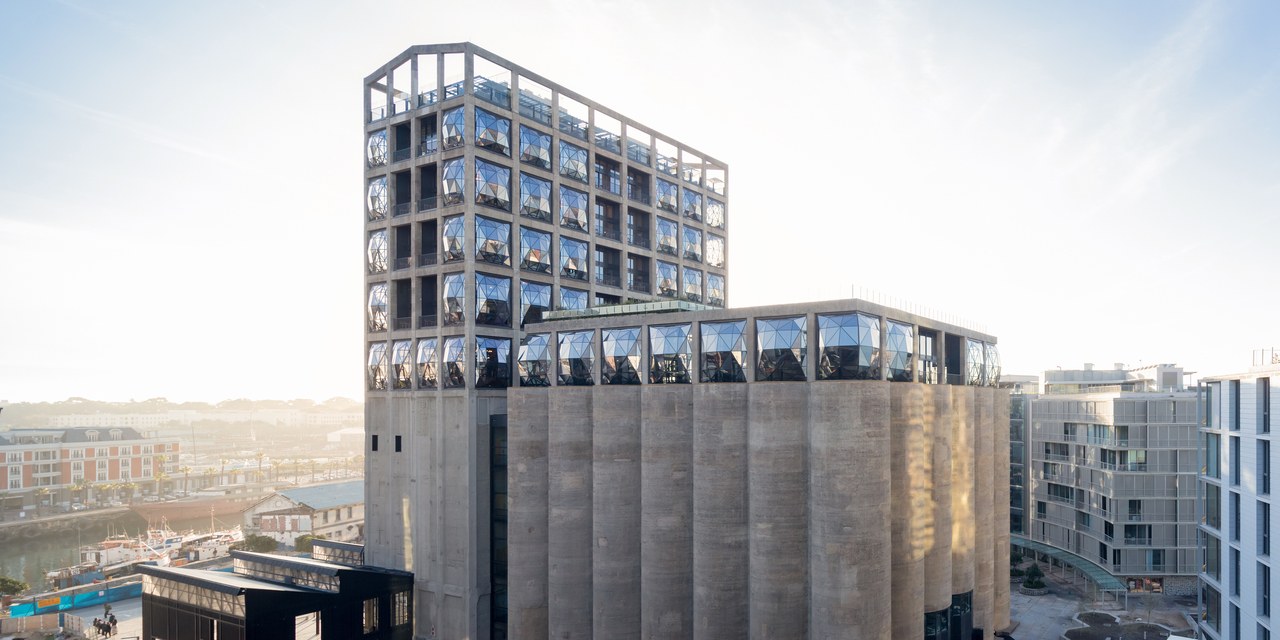MARK NOBLE
MARK NOBLE is the Development Director at the V&A Waterfront in Cape Town - a 300 hectare mixed-use development situated within the city’s historic working harbour at the southern tip of Africa. With over 24 million visitors per year, it is the most visited attraction on the continent.
In this role, Mark has been the catalyst and the driving force behind the creation of the Zeitz Museum of Contemporary Art Africa (Zeitz MOCAA), the iconic redevelopment of the historic grain silo building in the heart of the new Silo district. The building, designed by Heatherwick Studio, has received numerous accolades over the last 18 months, not least the Leading Culture Destination of the Year award in 2018.
This remarkable project has allowed Mark to combine his passion for cities, contemporary art, culture, architecture and feats of engineering wizardry, with his ability to deliver highly complex large-scale developments. With over 17 years in the construction and development industry in London, Dubai and Cape Town, he has delivered projects as diverse as the development of luxury boutique game lodges in the Kruger Park to the delivery of the largest single phase residential development in the world in Dubai.
If there was one piece of art you could feature in, which would it be and why?
The photographs taken by Sethembile Msezane during the ‘Rhodes Must Fall’ protests at the University of Cape Town. The debate about statues’ relevance and role in perpetuating historical social injustices and institutional racism, is today more relevant than ever. her series of photographs captured an incredibly powerful moment that resonates louder every year.
This is a great example of the impact art and culture can have on the public sphere, and more importantly, the statements that are made when they are physically removed.
What are your favourite cultural cities in the world and why?
I recently visited the cities of Lisbon and Porto and was struck by the energy that exists in both places. The sense of authenticity and creativity in local design was evident throughout. the most interesting galleries and spaces located at the aging industrial areas in the outskirts of the cities – making a contemporary counterpoint to the likes of the Serralves and Gulbenkian museums.
Yet for me the real energy, the raw creativity and passion, can be seen making waves across the continent of Africa. Places like Bamako, Lagos, Dakar, Johannesburg and Cape Town have thriving art scenes, that are making an international impact. There is a sense of endless possibility, an incredible vibrancy and intensity that is so refreshing, even more so when contrasted against the current global malaise.
What are you up to at the moment and where can we find it?
Recently, I have been part of the #Freespace team that has created a month long programme of talks, debates and performances in partnership with Zeitz MOCAA and the African Centre for Cities. The programme is seeking to create a platform in which public space and the inclusivity of this space can be debated. The programme grapples with topics such as sustainable use, rights to space, ownership, shared meaning and how it can express the multiplicity of evolving contemporary identities. These are critical debates in any society, but never more prescient than the current status quo that exists in the city of Cape Town which has only just started unpacking the implications of the legacy of the Apartheid spatial planning policies. I was fortunate enough to be included in the inaugural panel and I’m excited to see how we can improve and expand the programme in 2020. (www.zeitzmocaa.museum) (www.freespace.events).
I also sit on the board of the V&A Waterfront Art in Public Places programme, which is in the process of infecting the Waterfront with a series of different cultural interventions including new sculptures, performances and programmes – along with a collaboration with the Cape Town Art Fair 2019. (www.investeccapetownartfair.co.za).
What is your opinion of the rise in experiential cultural activations - what is the most interesting interactive experience you have attended?
People naturally want to engage with situations and other people. Creating an experience-led cultural activation has the ability to connect people with the artwork in ways that more traditional mediums cannot. Random International’s Rain Room is one of my favourite experiences. I had the fortune to walk through the room when it was exhibited at London’s Barbican (the queue was around the block) and was blown away by the technology and poetry of the piece.
I also attended a number of the Shunt Productions at the catacombs underneath London Bridge. The experience and intensity of shows like Money and Tropicana has never left me.
How can museums educate us more about key current challenges, such as climate change and is it their role to do so?
Museums play such a critical role in contemporary society as non-aggressive, non-partisan, non-racial, non-sexual, non-biased places, without any prejudices. people can meet to exchange thoughts, ideas, cultures and views in safety. within this role, museums must address the pertinent societal issues of the day.
However, it is also their responsibility to engage with the societal issues of the local community. a local focus on the issues that community is affected by gives any institution a powerful authenticity that money cannot buy.
I believe that it is less of a role and more of an obligation for the museums to engage in these societal issues, an obligation to which the local populations should hold their institutions accountable.



